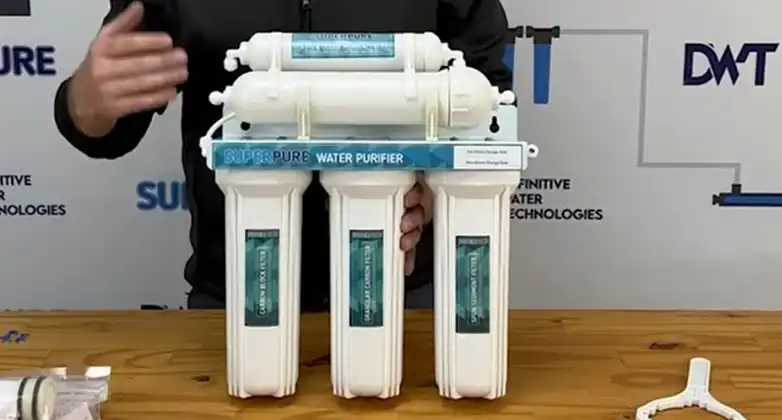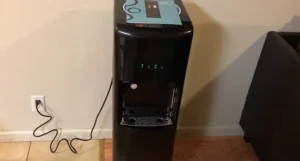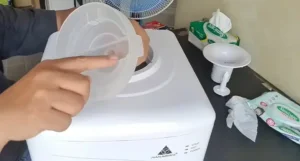Water is essential for life, but not all water is created equal. The quality and taste of your water can have a significant impact on your health, well-being, and enjoyment. That’s why many people are interested in pure water appliances, which can filter out contaminants, improve the flavor, and enhance the safety of your water.
However, choosing the right pure water appliance can be a daunting task. There are so many options available, each with different features, functionalities, and costs. How do you know which one is best for you and your budget?
In this article, I will guide you through the different types of pure water appliances, their costs, and key factors to consider for informed decision-making. By the end of this article, you will have a clear understanding of the pros and cons of each option, and how to choose the one that fits your specific needs and preferences.

How Do Pure Water Appliances Work?
There are four main types of pure water appliances that you can choose from: countertop filters, reverse osmosis systems, UV sterilization, and distillation. Each of these has its advantages and disadvantages, depending on your water quality, usage, and budget. Let’s take a closer look at each of them.
Countertop Water Filter
Countertop filters are the simplest and most affordable type of pure water appliance. They are easy to install and use, as they attach directly to your faucet and filter the water as it flows through. They can remove chlorine, sediment, and some other common contaminants from your water, improving its taste and odor.

However, countertop filters also have some limitations. They have a limited capacity, meaning that they can only filter a certain amount of water per day. They also require frequent filter changes, which can add up to the cost over time. Moreover, they are not very effective in removing heavy metals, pesticides, bacteria, viruses, and other harmful substances from your water.
Reverse Osmosis Systems
Reverse osmosis aka RO systems are the most advanced and effective type of pure water appliance. They use a high-pressure pump to force the water through a semi-permeable membrane, which filters out up to 99% of contaminants, including fluoride, lead, arsenic, nitrates, and microorganisms. They also have a storage tank and a faucet, which provide you with a constant supply of pure water.

RO systems can be installed either as whole-house systems, which filter all the water in your home, or as under-sink systems, which filter only the water from a specific faucet. Whole-house systems are more expensive and require more space, but they can protect your plumbing and appliances from corrosion and scale. Under-sink systems are cheaper and more compact, but they only provide pure water for drinking and cooking.
UV Sterilizer
UV sterilization is a type of pure water appliance that uses ultraviolet light to kill bacteria and viruses in your water. It is usually combined with other types of filtration, such as carbon or sediment filters, to remove other contaminants as well. UV sterilization is very effective in eliminating pathogens, such as E. coli, salmonella, and giardia, from your water, making it safe to drink.

However, UV sterilization also has some drawbacks. It does not remove any minerals, chemicals, or dissolved solids from your water, which can affect its taste and quality. It also requires electricity to operate, which can increase your energy bills. Moreover, it needs regular maintenance, such as replacing the UV bulb and cleaning the quartz sleeve, to ensure its optimal performance.
Electric Distiller
Distillation is a type of pure water appliance that uses heat to boil the water and then condense the steam into pure water. It is one of the oldest and simplest methods of water purification, and it can remove almost all contaminants, including salts, metals, organic compounds, and microorganisms, from your water.

However, distillation also has some disadvantages. It consumes a lot of energy, which can make it costly and environmentally unfriendly. It also removes all the minerals and trace elements from your water, which can make it flat and bland. Furthermore, it requires regular cleaning and descaling, as the impurities left behind can accumulate and damage the appliance.
Cost Comparison
The cost of pure water appliances can vary widely, depending on the type, features, and functionalities of each option. Here are some estimated price ranges for each type of appliance, based on the average market prices as of December 2023:
| Appliance | Cost Range |
| Countertop Water Filter | $20 – $150 |
| Under-sink RO System | $250 – $750 (installed) |
| Whole-house RO System | $2,000 – $7,000 (installed) |
| UV Sterilizer | $300 – $800 |
| Electric Distiller | $200 – $1,000 |
These prices are only for the initial purchase of the appliance and do not include the additional costs of installation, filter replacements, and ongoing maintenance, which can also vary depending on the type and frequency of use of the appliance. For example, countertop filters may require filter changes every 2-6 months, which can cost $10-$50 per filter. RO systems may require filter changes every 6-12 months, which can cost $20-$100 per filter. UV sterilization may require bulb changes every 12-24 months, which can cost $50-$100 per bulb. Distillation may require cleaning and descaling every 1-3 months, which can cost $5-$10 per cleaning.
Therefore, when comparing the costs of pure water appliances, you should consider not only the upfront cost but also the long-term cost of ownership and operation.
What Are the Key Factors to Consider?
Choosing the right pure water appliance for you depends on several factors, such as your water quality, water usage, budget, maintenance, and additional features. Here are some questions to ask yourself before making a decision:
Water Quality
What are the common contaminants in your local water supply? You can find out by checking your water quality report, which is usually available online or by request from your water provider. Alternatively, you can test your water yourself using a home water testing kit, which can be purchased online or at a hardware store.
What level of filtration do you need? Depending on the type and amount of contaminants in your water, you may need a different level of filtration to ensure your water is safe and healthy. For example, if your water has high levels of chlorine, sediment, and taste and odor issues, you may be satisfied with a countertop filter. However, if your water has high levels of fluoride, lead, arsenic, nitrates, or microorganisms, you may need a more advanced option, such as an RO system, a UV sterilizer, or a distiller.
Water Usage
How much water do you use per day? You can estimate your daily water consumption by multiplying the number of people in your household by the average amount of water used per person per day, which is about 2-3 gallons for drinking and cooking. Alternatively, you can measure your water usage by checking your water meter or your water bill.
How much capacity do you need? Depending on your water usage, you may need a different capacity for your pure water appliance. For example, if you use a lot of water per day, you may need a whole-house RO system, which can provide unlimited pure water for your entire home. However, if you use a moderate amount of water per day, you may be fine with an under-sink RO system, which can provide enough pure water for your kitchen faucet. If you use a small amount of water per day, you may be okay with a countertop filter, a UV sterilizer, or a distiller, which can provide a limited amount of pure water per day.
Budget
How much can you afford to spend? You should establish a realistic budget for your pure water appliance, and compare the various options within your range. You should also consider the additional costs of installation, filter replacements, and ongoing maintenance, which can affect the total cost of ownership and operation of the appliance. You should also factor in the potential savings from reduced bottled water purchases, improved health, and increased lifespan of your plumbing and appliances.
How much value do you get? You should evaluate the cost-effectiveness of each option, and determine how much value you get for your money. You should consider the quality, performance, durability, and reliability of the appliance, as well as the customer service, warranty, and reputation of the manufacturer. You should also consider the environmental impact of the appliance, such as its energy consumption, water waste, and carbon footprint.
Maintenance
How easy is it to maintain? You should assess the ease of maintenance of each option, and determine how much time and effort you are willing to invest in keeping your appliance in good condition. You should consider the frequency and difficulty of filter replacements, cleaning, and descaling, as well as the availability and affordability of the parts and supplies. You should also check the user manual and reviews of the appliance, and see if there are any common issues or complaints that may require professional assistance or repair.
How much does it cost to maintain? You should estimate the ongoing maintenance costs of each option, and determine how much they add up to the total cost of ownership and operation of the appliance. You should consider the cost of filter replacements, bulb replacements, cleaning and descaling products, electricity, and water. You should also consider the warranty and service coverage of the appliance, and see if they cover any parts or labor costs in case of malfunction or damage.
Additional Features
What features do you want? You should consider the importance of additional features that may enhance the functionality, convenience, and aesthetics of your pure water appliance. Some of these features may include digital displays, flow rate, dispenser options Some of these features may include digital displays, flow rate, dispenser options, and smart integrations.
Digital displays can show you the status and performance of your appliance, such as the filter life, water quality, and water temperature. Flow rate can affect how fast you can fill your glass or bottle with pure water. Dispenser options can vary from a simple faucet to a refrigerator door dispenser to a separate spout. Smart integrations can allow you to control and monitor your appliance remotely using your smartphone or voice assistant.
However, these features are not essential for the functionality of your pure water appliance, and they may increase the cost and complexity of the appliance. Therefore, you should weigh the benefits and drawbacks of each feature, and decide which ones are worth paying for and which ones are not.
Expert Insights and Tips
To help you make the best decision, I have gathered some expert insights and tips from water treatment professionals on choosing the right pure water appliance. Here are some of their suggestions:
Compare different models and brands of pure water appliances, and read their specifications, reviews, and ratings carefully. Look for independent and verified sources of information, such as Consumer Reports, NSF International, or the Water Quality Association.
Understand the warranty and service terms of your pure water appliance, and see what they cover and what they exclude. Check the duration, scope, and conditions of the warranty, and see if it includes parts, labor, and shipping costs. Also, check the availability and accessibility of the service providers, and see if they are authorized and qualified to handle your appliance.
Address common misconceptions and myths surrounding pure water appliances, such as the following:
- Pure water is not acidic or corrosive. While pure water has a slightly lower pH than tap water, it is still within the neutral range, and it does not pose any risk to your health or your pipes. In fact, pure water can prevent corrosion and scale buildup in your plumbing and appliances, which can extend their lifespan and efficiency.
- Pure water does not leach minerals from your body. While pure water does not contain any minerals, it does not remove any minerals from your body either. Your body gets most of its minerals from food, not water, and it regulates its mineral balance through various mechanisms. Moreover, pure water can enhance your mineral absorption and utilization, as it does not interfere with your digestion and metabolism.
- Pure water does not need to be remineralized. While some people may prefer to add minerals to their pure water for taste or health reasons, it is not necessary or beneficial for everyone. The amount and type of minerals that you need depend on your individual needs and preferences, and they can vary from person to person. Therefore, you should consult your doctor or nutritionist before adding any minerals to your pure water, and see what they recommend for you.
Wrapping Things Up
I hope this article has helped you navigate the maze of pure water appliances, and given you some useful information and tips on how to choose the right one for you. Remember, the best pure water appliance for you depends on your water quality, water usage, budget, maintenance, and additional features. Therefore, you should do your research, compare your options, and consider your needs and preferences before making a decision.
Pure water appliances can offer you many benefits, such as improved taste, health, and safety of your water. They can also save you money, time, and hassle from buying bottled water, dealing with water issues, and maintaining your plumbing and appliances. However, they also require some investment, installation, and upkeep, which you should be prepared for and willing to do.
Ultimately, the choice is yours, and you should choose the pure water appliance that fits your specific needs and budget. I encourage you to prioritize long-term benefits and choose an appliance that will provide you with pure, clean, and delicious water for years to come.
If you need further research or professional advice, you can visit our website, where you can find more articles, videos, and resources on pure water appliances. You can also contact us anytime and I will be happy to answer your questions and assist you with your water treatment needs. Thank you for reading, and I wish you all the best with your pure water appliance purchase.
Common Related Questions
What’s the best value for basic water filtration?
For basic filtration, countertop pitchers provide the best value starting at around $40. They offer affordable perks like portability and simplified maintenance for entry-level purification.
Do all reverse osmosis systems remove the same contaminants?
Reverse osmosis systems vary in their pre-filtration stages, membrane ratings, and post-filtration, impacting performance. Consult manufacturer specs for a detailed breakdown of a system’s purification capabilities before purchasing.
Why does distilled water have a flat taste?
The distillation process removes all dissolved minerals that provide taste. Many distillers allow reincorporating minerals after treatment using “remineralization cartridges” for improved flavor.
What ongoing costs are involved beyond the initial purchase?
Consider regular costs for replacing filter cartridges, membranes, UV bulbs, and other consumable parts. Whole-house RO systems have high maintenance demands and parts expenses.
What water contaminants require advanced systems versus basic filtration?
Countertop pitchers remove basic particulates, chlorine, and lead. For chemical, pesticide, pharmaceutical, or heavy metal removal, under-sink RO or distillers are likely needed. Always start with a water quality analysis to match technology to your specific impurities.
REFERENCE:

![Read more about the article [Answered] Is Baby Brezza Warmer than Body Temp?](https://waterseep.com/wp-content/uploads/2023/06/Is-Baby-Brezza-Warmer-than-Body-Temp-300x161.webp)

